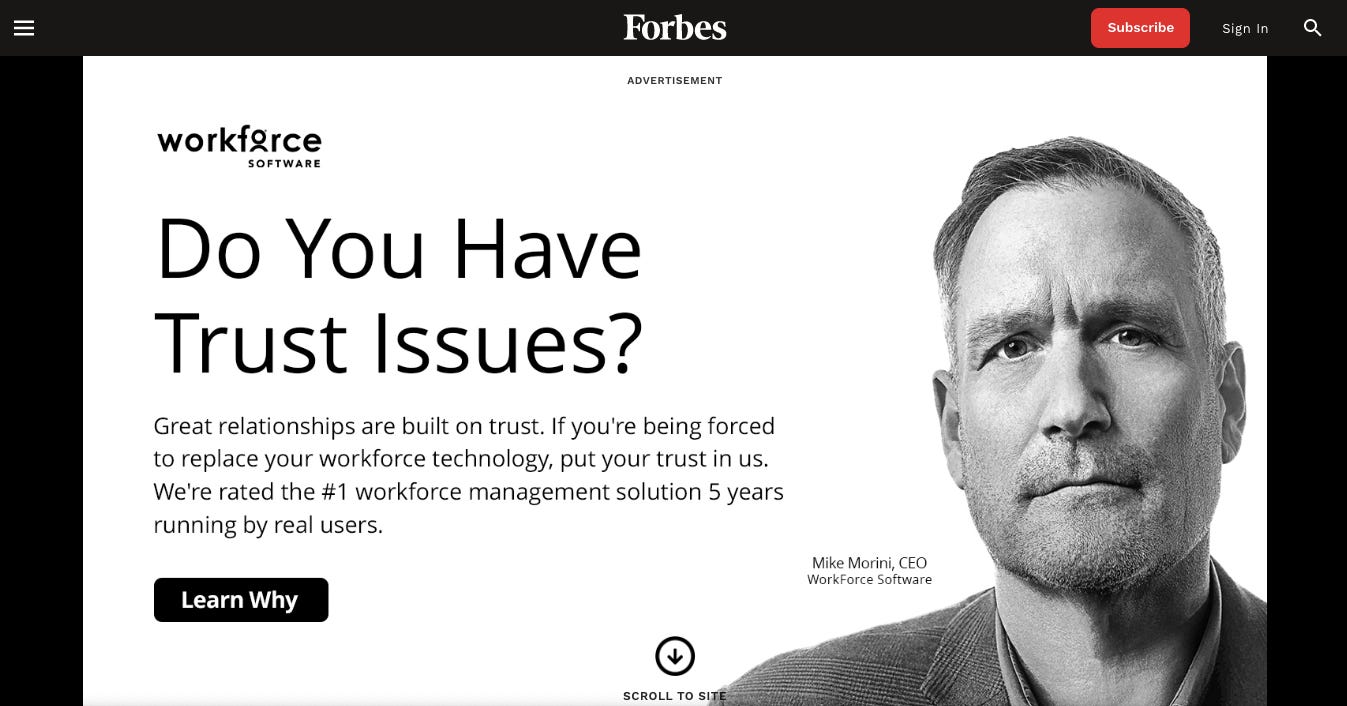To Ad or Not to Ad, or Maybe Just Offer Subscriptions?
How to maintain readership and financial stability with your website
If you own a website, you likely want to profit off of it. Or a profit would be a nice addition to your fun blogging hobby.
No matter which revenue-making route you take, your audience is of the upmost importance. If you rely heavily on revenue from advertisements, you need your audience on your website viewing and clicking on those ads. If you rely heavily on subscriptions and/or memberships, you need a committed audience willing to pay for your content.
So, which route do you take?
Advertisements
Advertisements may seem like a good option for revenue at first—they help you make a profit while still allowing your audience to access your content for free. But ads also come with downsides.
Some websites’ uses of advertisements have become aggressive, to say the least. Some will fill their borders with multiple ads, and others will have full-screen-sized ads pop up over your entire screen like this Forbes article in the picture below.
Elizabeth Anne Watkins of CJR reports that many internet users now use ad blockers to avoid annoying ads, and some browsers like Safari and Chrome have built in ad-blocking software.
“Since 2015, the popularity of ad blockers has skyrocketed” according to Watkins, and internet users certainly haven't started loving ads any more since then. Despite this, Watkins still argues for the value in advertisements as a way of providing content to people of any financial status.
"Subscription-based models of information distribution ensure that only people with means have access; advertising makes information available to everybody."
Subscriptions and Accessibility
You may want to avoid using advertisements that can look messy and be distracting, so you opt for a subscription-style website model that requires readers to pay for a subscription to access your content. But then you start to wonder, does this subscription model exclude readers from my site?
You want to make your content accessible to everyone, but you’ve got to eat too! So how do you balance a for-profit business model for your website with the desire to make quality content accessible for everyone?
I’m sure we can all agree that there is enough content out there existing solely for the sake of grabbing our attention. Because of this “clickbait” internet culture, readers of online publications have shown that they are willing to support content they care about and enjoy. Not everything has to be quantity over quality.
Laura Oliver of Reuters Institute explains how some websites like elDiario.es focus on the relationship with their audience as a priority over strict subscription guidelines.
“We work on a more emotional level which is why our potential members are our most loyal readers,” says Esther Alonso, elDiario.es’ marketing and development director.
Oliver details how this Spanish news site maintains this emotional perspective in their use of a metered paywall. Once readers have accessed 10 free articles, they are prompted with a message that informs them they must become a paid member to continue accessing content. Readers are only asked to pay after they’ve become loyal to the website. This approach has helped edDiario.es turn loyal readers into loyal supporters who want to support the content they enjoy.
Value Your People (And Your People Will Value You)
By offering alternative options to paid subscriptions, you can open your doors wide to a larger, more diverse audience. For example, many publications offer special discounts for students and educators with email addresses ending in .edu. As a definitely-not-rich graduate student, I am currently enjoying the free one-year subscription to Air Mail whose team is “delighted” to have me.
When websites help their readers access their content with discounted and “I can’t pay” subscription options, they create loyal readers who will be much more likely to pay for a subscription later on than a first-time reader of the site.
This approach also puts value in building a loyal community of readers, creating a much more sustainable future for publications as compared to those relying on random readership and quick ad clicks.
So, which route do you take? It depends on what values you want to portray with your site and how you want your site to look. Whichever option you choose, it is important to understand how your interactions with your readership can influence your business model.





